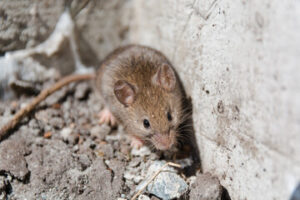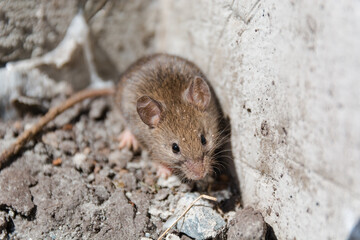Mice can cause a lot of damage and spread diseases in homes. Luckily, there are several ways to prevent mice infestations and protect your family’s health.

Keeping food inside containers, storing trash in sealed receptacles and keeping bushes and trees trimmed can help prevent mice infestations. A professional pest control service can also determine how mice are entering your home and seal any entry points. Contact Mice Removal Texas for professional help.
Mice are a common household pest that can cause structural damage to buildings and food loss in the pantry. They also spread many diseases, which can be harmful to human beings. To keep mice from infesting homes, residents must learn to recognize the signs that these rodents are around. These classic symptoms can include scurrying noises in walls and ceilings, gnaw marks, and tampered or damaged foods and fabrics.
One of the first indicators of a mice infestation is droppings that are small and pellet-shaped. These may be found near food sources or along mouse travel routes. Droppings will often leave a musky, ammonia-like odor. Gnaw marks are another common indicator of a mice problem, as these rodents have to constantly gnaw to keep their teeth from overgrowing. Often, you will find these marks on electrical wires and furniture. Mice also chew a lot when building nests, using shredded materials like paper and fabric to construct warm and hidden places to raise young.
Other signs of a mice problem are tracks and runways that appear in the house. These fine lines are formed by grease and dirt on the mice’s fur as they run across the floors, walls, and appliances in the home. You may also notice gnawed holes in food containers and cardboard boxes. If you see these signs in your home, it is important to call a professional immediately.
Since mice are nocturnal, they often make scratching sounds in walls and ceilings at night. This activity can also be heard in lofts and attics. Scratching and scurrying in the walls can be difficult to distinguish from the sound of normal house creaks, but consistent scratching is a sign of a serious problem.
Mice can fit through openings as small as a quarter-inch, which makes it difficult to detect their presence until it is too late. In addition to their obvious damage, they can lead to fire hazards by chewing on electrical wires. They can also inflict serious damage to crops and gardens by feeding on them or spreading disease through their feces and urine.
Detecting a Mice Infestation
Because of their nocturnal habits and natural instinct to stay hidden, mice are often difficult to detect. This can make them especially dangerous since they may carry bacteria, viruses, and other microorganisms that cause disease in people and pets. Thankfully, there are some common signs of a mouse infestation that you should keep an eye out for.
First, consider whether you’ve heard scurrying or scratching sounds in your walls or ceiling during the night. This is a sign that mice are living in your home, and it’s likely due to the fact they’re most active at night. It could also indicate the presence of other rodents, but a professional can help you determine for sure.
Another telltale sign of a mice infestation is droppings in your home. Mice feces resemble tiny black dots and are typically found in food storage areas like pantries, cabinets, bins, drawers, and the attic. You should also keep an eye out for chew marks in corners, along the edges of walls, and inside small, enclosed spaces.
Finally, keep your nose alert for a musky odor. Mice urine and feces have a strong, unpleasant odor that can be recognized even in small amounts. This odor can spread throughout your home quickly, which can cause health and sanitation problems.
In addition to preventing these warning signs, you should also take steps to prevent mice from entering your home in the first place. You should make sure that all entry points are properly sealed, including air ducts, vents, and utility pipe entries. You should also regularly inspect and replace weather stripping around doors and windows.
It’s also a good idea to regularly clean your house and dispose of trash in rodent-proof containers. This will help reduce the availability of food and shelter for mice, as well as discourage them from nesting in your home.
If you’re concerned about your family’s safety, a pest control service is always a good option. A licensed technician can safely remove the mice, sanitize your house, and exclude them from reentry in the future. They can also repair any damage that the rodents have caused to your property.
Removing a Mice Infestation
A mice infestation poses more than just a nuisance and aesthetic concerns. Mice carry dangerous pathogens and can transfer them directly through their droppings, urine or saliva, as well as through the ticks, fleas and mites they attract. This can lead to serious health problems, especially for children and pets. Mice also damage structures by chewing through wires, insulation, and drywall. The cost of repairing and disinfecting damaged areas can be quite high. Additionally, odors from rodent droppings, urine, and decaying carcasses can be difficult to eliminate and can diminish indoor air quality.
Pest control professionals advise homeowners to seek professional help immediately upon suspecting a mouse infestation. They also recommend regularly inspecting for signs of mice activity, such as fresh droppings and gnawing marks. Early detection can mitigate structural damage, minimize the risk of disease and other issues, and save homeowners considerable time and expense in addressing the problem.
Generally, the most important step in removing mice is eliminating food sources. Keep counters and other surfaces free of crumbs, clean out cabinets and pantries regularly to prevent build-up of mold and mildew, and keep food tightly sealed in containers. In addition, fix leaky faucets and pipes to reduce the likelihood of water seepage that mice can use as a path into a home.
Other prevention methods include regularly sweeping and vacuuming floors to remove dust, dirt, and other debris that mice like to hide in, and storing firewood off the ground and away from the house. Regularly cleaning and inspecting doors and windows to seal cracks and gaps, ensuring the weather stripping is intact, and trimming overgrown vegetation can further limit the ability of mice to access a home.
Finally, placing bait stations outdoors can help to control a mice infestation before it moves indoors. These can be placed in locations that mice often frequent, such as behind a crawlspace or basement, around the foundation of the home, under porches and sheds, and areas of clutter/disarray. The stations contain bait, which lures the mice into a trap where they are killed humanely.
Preventing a Mice Infestation
Mice are incredibly adaptable and can thrive in almost any environment, including homes. Their nocturnal nature and high reproduction rates make them very difficult to prevent, but there are a few steps homeowners can take to discourage mice from taking up residence in their home.
First, homeowners should conduct a thorough inspection of their homes to look for signs of a potential infestation. These include droppings, which are small and pellet-shaped and typically found near food sources or along mouse pathways; gnaw marks on walls, wires, or furniture; and shredded paper or fabric used for nesting material. Also, be on the lookout for scratching sounds during the night and a musky ammonia-like smell.
It’s important to note that mice can cause significant damage in just a few weeks. They can chew through wires, which poses a fire hazard and may lead to electrical issues; destroy or contaminate stored food; and spread diseases like hantavirus (which begins with flu-like symptoms and escalates into respiratory problems) and salmonella (which causes gastrointestinal distress).
The best way to prevent mice infestations is by keeping food in tightly-sealed containers. Also, keep trash cans sealed and dispose of regularly. Lastly, homeowners should declutter their home as much as possible to reduce places where mice can hide.
Another common prevention technique is to use a natural deterrent, such as peppermint oil. Homeowners can soak cotton balls in a few drops of pure peppermint oil and place them strategically around the house, such as near entry points or in cabinets. The strong aroma disrupts the mice’s sense of smell and disorients them, making your home less appealing. Another easy DIY solution is to spray your property with a commercial mouse repellent, which is available at most hardware and home improvement stores. The key is to continually reapply the repellent to ensure continued effectiveness. The most effective mouse repellents contain DEET, which is safe for pets and children.

